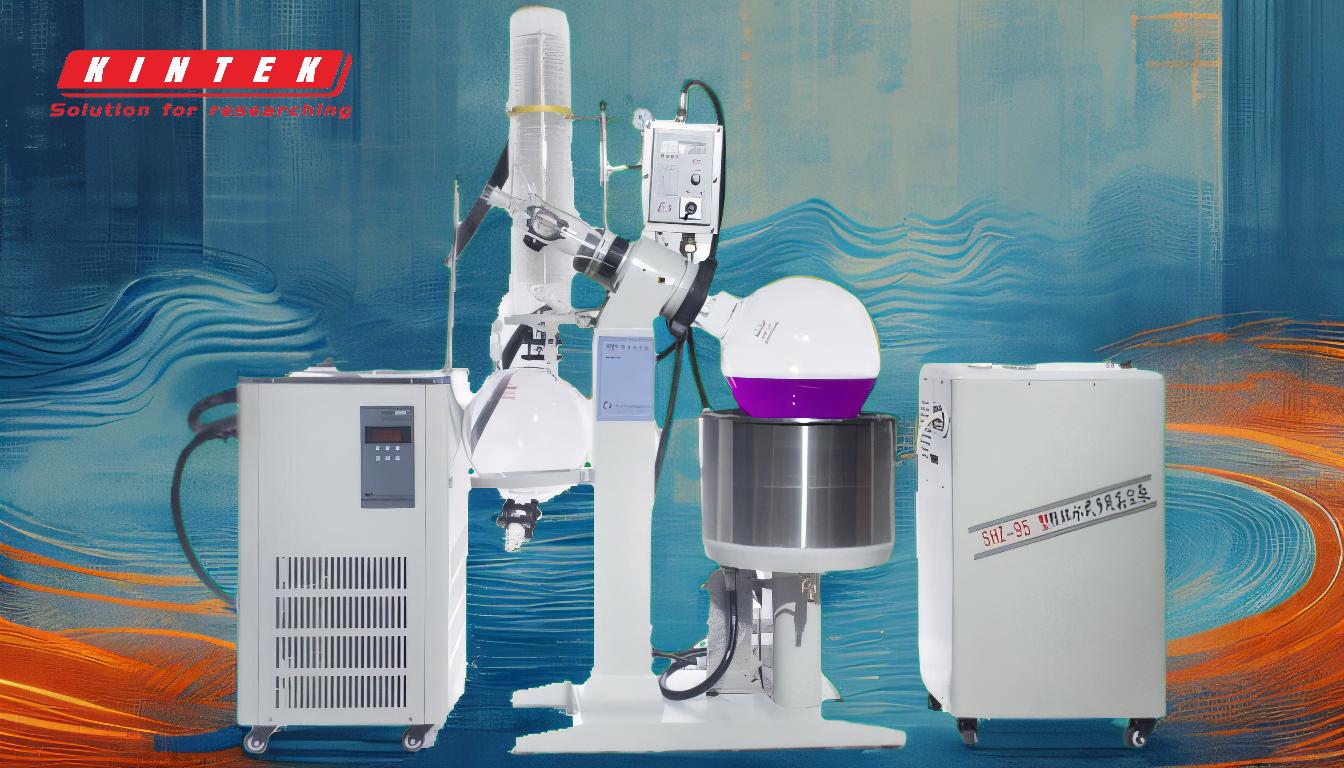Distillation is a critical process in chemistry for separating mixtures based on differences in boiling points. However, it is essential to stop the distillation process before the flask becomes completely dry to prevent several potential hazards and ensure the integrity of the equipment and the safety of the operator. Continuing distillation until the flask dries out can lead to overheating, thermal decomposition of residues, and even explosions due to the buildup of pressure or reactive compounds. Additionally, running the flask dry can damage the glassware, leading to costly replacements and potential contamination of the distillate. By stopping the process before the flask dries, one ensures a safer, more efficient, and controlled separation process.
Key Points Explained:

-
Prevention of Overheating and Thermal Decomposition:
- When the liquid in the flask evaporates completely, the remaining solid residues or high-boiling-point compounds can overheat.
- Overheating can cause these residues to decompose, potentially releasing toxic or flammable gases.
- Thermal decomposition can also lead to the formation of unwanted byproducts, contaminating the distillate and reducing the purity of the desired compound.
-
Avoidance of Pressure Buildup and Explosion Risks:
- In a closed distillation system, running the flask dry can lead to a sudden increase in pressure due to the rapid vaporization of residual compounds or the release of gases from decomposition.
- This pressure buildup can cause the flask or other components of the distillation setup to rupture, posing a significant explosion hazard.
- Even in open systems, the risk of fire or splattering of hot residues remains if the flask overheats.
-
Protection of Glassware and Equipment:
- Glassware used in distillation, such as round-bottom flasks, is designed to withstand specific temperature ranges. Exceeding these limits by running the flask dry can cause the glass to crack or shatter.
- Damaged glassware not only requires replacement but also poses a safety risk due to sharp fragments and potential chemical spills.
- Coating joints with vacuum grease, as mentioned in the reference, helps maintain a proper seal and prevent leaks, but running the flask dry can compromise these seals.
-
Ensuring Process Control and Efficiency:
- Stopping distillation before the flask dries allows for better control over the separation process, ensuring that only the desired fractions are collected.
- It prevents the contamination of the distillate with high-boiling-point impurities or decomposition products, which can affect the quality and usability of the final product.
- Properly managing the distillation process also reduces the need for additional purification steps, saving time and resources.
-
Safety Considerations for the Operator:
- Running the flask dry increases the risk of accidents, such as burns from hot glassware or exposure to hazardous chemicals.
- By stopping the process at the appropriate time, the operator minimizes these risks and maintains a safer working environment.
- Proper setup, including securely connecting glassware and tubing joints, as mentioned in the reference, further enhances safety during distillation.
-
Practical Steps to Prevent Running the Flask Dry:
- Monitor the distillation process closely, using temperature controls and visual cues to determine when to stop.
- Use a heating mantle or oil bath with precise temperature regulation to avoid overheating.
- Ensure that the vacuum system, if used, is properly maintained and adjusted to prevent sudden pressure changes.
- Follow best practices for equipment setup, such as applying vacuum grease to joints and sealing surfaces, to maintain system integrity.
By adhering to these guidelines, one can ensure a safe, efficient, and effective distillation process, avoiding the pitfalls associated with running the flask dry.
Summary Table:
| Key Points | Explanation |
|---|---|
| Prevention of Overheating | Prevents thermal decomposition and release of toxic/flammable gases. |
| Avoidance of Explosion Risks | Reduces pressure buildup and rupture risks in closed systems. |
| Protection of Glassware | Prevents cracking, shattering, and contamination of distillate. |
| Process Control and Efficiency | Ensures purity of distillate and reduces need for additional purification steps. |
| Safety for the Operator | Minimizes risks of burns, chemical exposure, and accidents. |
| Practical Steps | Monitor process, regulate temperature, and maintain equipment integrity. |
Ensure a safe and efficient distillation process—contact our experts today for guidance!









